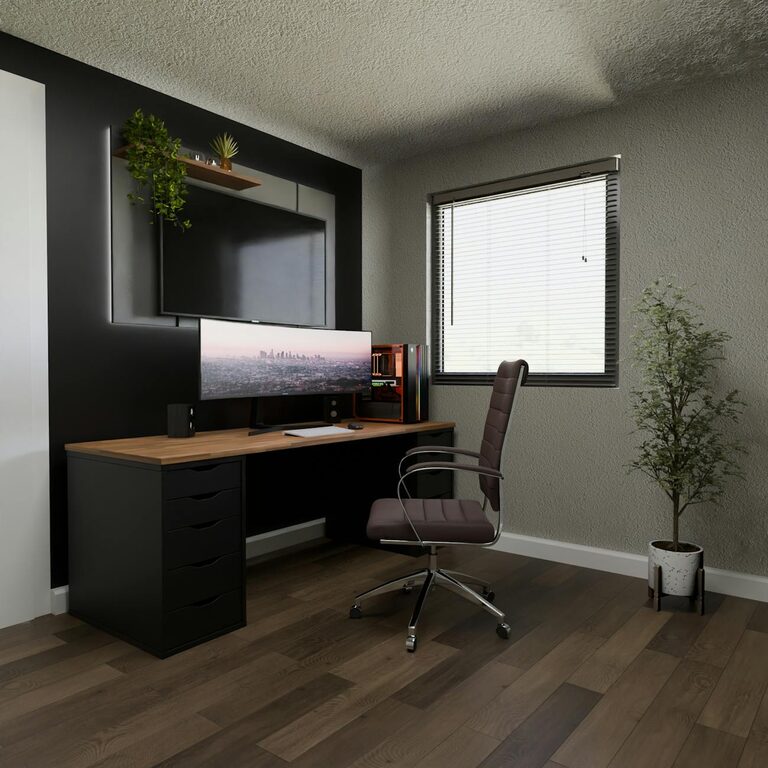Creating a workspace that fosters both comfort and focus is essential for productivity and well-being, whether you work from home or in an office. A thoughtfully arranged desk setup can minimize distractions, reduce physical strain, and create an environment where your best work flourishes. In this post, we’ll explore practical tips to optimize your desk for comfort and concentration.
Why a Good Desk Setup Matters
Before diving into specific tips, it’s worth understanding why your desk setup plays such a key role in your work life. Poor ergonomics can cause discomfort, fatigue, and even long-term health issues like back or wrist pain. Meanwhile, a cluttered or poorly organized space can hinder focus and increase stress levels.
By aligning your workspace with your body’s natural posture and organizing your tools efficiently, you create a foundation where both your mind and body can function at their best.
Choosing the Right Desk and Chair
Ergonomic Desk Height
The ideal desk height allows your arms to rest comfortably at a 90-degree angle when typing or using a mouse. Standard desk heights range from 28 to 30 inches, but adjustable desks provide flexibility—especially if multiple people use the same space.
Comfortable and Supportive Chair
Invest in a chair that offers lumbar support and adjusts for seat height and back angle. Your feet should rest flat on the floor, and your knees should be at or slightly below hip level.
Consider a Sit-Stand Option
If possible, try a sit-stand desk or a desktop converter. Alternating between sitting and standing can help reduce fatigue and boost energy throughout the day.
Monitor Placement for Reduced Eye and Neck Strain
Position at Eye Level
Place the top of your monitor screen at or just below eye level. This alignment encourages you to maintain a neutral neck posture rather than tilting your head up or down.
Maintain Ideal Distance
Keep the monitor about an arm’s length away – roughly 20 to 30 inches. This distance reduces eye strain while allowing you to clearly see all on-screen details.
Use Multiple Monitors Wisely
If you use two monitors, position them close together and at the same height. Align the primary monitor directly in front of you to avoid excessive neck rotation.
Organizing Your Desk for Efficiency
Declutter Regularly
A clutter-free workspace can help reduce distractions. Keep only the essentials on your desk and store papers, tools, and gadgets nearby but out of sight.
Use Storage Solutions
Desk organizers, shelves, and drawers help keep items grouped and accessible. Label storage bins if needed to speed up retrieval.
Manage Cables
Tidy cables with clips or a cable management tray to prevent tangles and free up desk space.
Optimizing Lighting
Natural Light
If possible, position your desk near a window to benefit from natural light. Exposure to daylight can improve mood and alertness.
Avoid Glare
Use blinds or curtains to reduce glare on your screen. Position your monitor perpendicular to windows to minimize reflections.
Add Task Lighting
A desk lamp with adjustable brightness and direction helps illuminate your work area without eye strain, especially in the evenings or low-light rooms.
Enhance Comfort with Accessories
Ergonomic Keyboard and Mouse
Choose devices that support a natural hand position. An ergonomic keyboard and mouse can prevent wrist strain and promote comfort during long typing sessions.
Use a Wrist Rest
A cushioned wrist rest helps maintain neutral wrist alignment and offers support while typing or using a mouse.
Bring in Personal Touches
Plants, artwork, or a favorite mug can make your space inviting and boost your mood, but avoid overdecorating to keep distractions low.
Establish Healthy Work Habits
Take Regular Breaks
Incorporate short breaks every hour to stand, stretch, and give your eyes a rest. The 20-20-20 rule is helpful: every 20 minutes, look at something 20 feet away for 20 seconds.
Keep Hydrated
Keep a water bottle on your desk to stay hydrated, which supports concentration and overall health.
Set Boundaries
Make your workspace a dedicated area for work only if possible. This helps condition your brain to associate it with focus and productivity.
Final Thoughts
Setting up your desk with focus and comfort in mind doesn’t require expensive gadgets or major renovations. Small adjustments, thoughtful organization, and attention to ergonomics can transform your workspace into a haven for productivity and well-being. Experiment with these tips, listen to your body, and find what setup works best for you. A better desk setup is a key step toward working smarter and feeling better every day.


